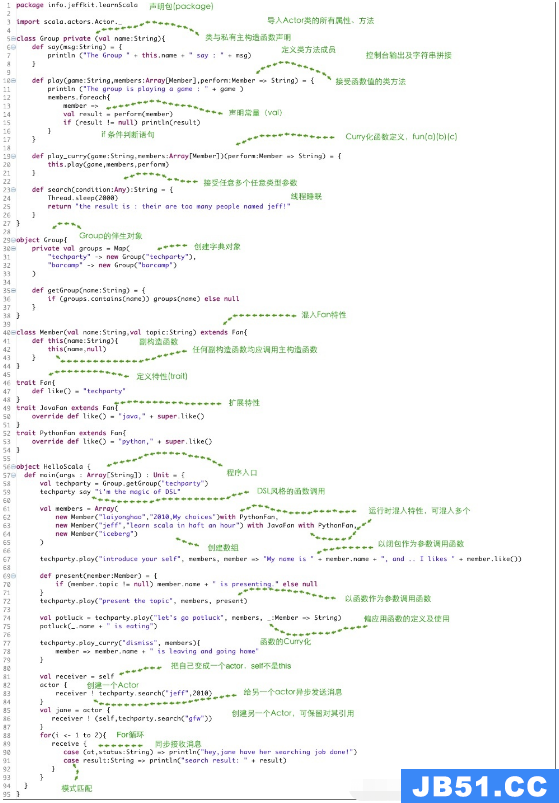我是
Scala的新手.目前我正在尝试在每月下滑的12个月期间汇总火花中的订单数据.
下面是我的数据的简单示例,我尝试对其进行格式化,以便您可以轻松地对其进行测试
import spark.implicits._ import org.apache.spark.sql._ import org.apache.spark.sql.functions._ var sample = Seq(("C1","01/01/2016",20),("C1","02/01/2016",5),"03/01/2016",2),"04/01/2016",3),"05/01/2017","08/01/2017","01/02/2017",10),"01/03/2017",10)).toDF("id","order_date","orders") sample = sample.withColumn("order_date",to_date(unix_timestamp($"order_date","dd/MM/yyyy").cast("timestamp"))) sample.show
+---+----------+------+ | id|order_date|orders| +---+----------+------+ | C1|2016-01-01| 20| | C1|2016-01-02| 5| | C1|2016-01-03| 2| | C1|2016-01-04| 3| | C1|2017-01-05| 5| | C1|2017-01-08| 5| | C1|2017-02-01| 10| | C1|2017-02-01| 10| | C1|2017-03-01| 10| +---+----------+------+
强加给我的结果如下.
id period_start period_end rolling C1 2015-01-01 2016-01-01 30 C1 2016-01-01 2017-01-01 40 C1 2016-02-01 2017-02-01 30 C1 2016-03-01 2017-03-01 40
到目前为止我试图做的事情
我将每个客户的日期折叠到了该月的第一天
(e.i. 2016-01-[1..31] >> 2016-01-01 )
import org.joda.time._
val collapse_month = (month:Integer,year:Integer ) => {
var dt = new DateTime().withYear(year)
.withMonthOfYear(month)
.withDayOfMonth(1)
dt.toString("yyyy-MM-dd")
}
val collapse_month_udf = udf(collapse_month)
sample = sample.withColumn("period_end",collapse_month_udf(
month(col("order_date")),year(col("order_date"))
).as("date"))
sample.groupBy($"id",$"period_end")
.agg(sum($"orders").as("orders"))
.orderBy("period_end").show
+---+----------+------+ | id|period_end|orders| +---+----------+------+ | C1|2016-01-01| 30| | C1|2017-01-01| 10| | C1|2017-02-01| 20| | C1|2017-03-01| 10| +---+----------+------+
我真的不确定从这一点开始的最佳方法是什么,考虑到我需要处理多少数据,这不会花费5个小时.
任何帮助,将不胜感激.
解决方法
tried the provided window function but I was not able to use 12 months sliding by one option.
您仍然可以使用间隔较长的窗口,但所有参数都必须以天或周表示:
window($"order_date","365 days","28 days")
不幸的是,这个窗口不会尊重月份或年份的界限,因此对您来说不会有用.
就个人而言,我会先汇总数据:
val byMonth = sample .groupBy($"id",trunc($"order_date","month").alias("order_month")) .agg(sum($"orders").alias("orders"))
+---+-----------+-----------+ | id|order_month|sum(orders)| +---+-----------+-----------+ | C1| 2017-01-01| 10| | C1| 2016-01-01| 30| | C1| 2017-02-01| 20| | C1| 2017-03-01| 10| +---+-----------+-----------+
创建参考日期范围:
import java.time.temporal.ChronoUnit val Row(start: java.sql.Date,end: java.sql.Date) = byMonth .select(min($"order_month"),max($"order_month")) .first val months = (0L to ChronoUnit.MONTHS.between( start.toLocalDate,end.toLocalDate)) .map(i => java.sql.Date.valueOf(start.toLocalDate.plusMonths(i))) .toDF("order_month")
并结合独特的ID:
val ref = byMonth.select($"id").distinct.crossJoin(months)
并与来源联系:
val expanded = ref.join(byMonth,Seq("id","order_month"),"leftouter")
+---+-----------+------+ | id|order_month|orders| +---+-----------+------+ | C1| 2016-01-01| 30| | C1| 2016-02-01| null| | C1| 2016-03-01| null| | C1| 2016-04-01| null| | C1| 2016-05-01| null| | C1| 2016-06-01| null| | C1| 2016-07-01| null| | C1| 2016-08-01| null| | C1| 2016-09-01| null| | C1| 2016-10-01| null| | C1| 2016-11-01| null| | C1| 2016-12-01| null| | C1| 2017-01-01| 10| | C1| 2017-02-01| 20| | C1| 2017-03-01| 10| +---+-----------+------+
使用这样的数据准备你可以使用窗口函数:
import org.apache.spark.sql.expressions.Window val w = Window.partitionBy($"id") .orderBy($"order_month") .rowsBetween(-12,Window.currentRow) expanded.withColumn("rolling",sum("orders").over(w)) .na.drop(Seq("orders")) .select( $"order_month" - expr("INTERVAL 12 MONTHS") as "period_start",$"order_month" as "period_end",$"rolling")
+------------+----------+-------+ |period_start|period_end|rolling| +------------+----------+-------+ | 2015-01-01|2016-01-01| 30| | 2016-01-01|2017-01-01| 40| | 2016-02-01|2017-02-01| 30| | 2016-03-01|2017-03-01| 40| +------------+----------+-------+
请注意,这是一项非常昂贵的操作,需要至少两次洗牌:
== Physical Plan == *Project [cast(cast(order_month#104 as timestamp) - interval 1 years as date) AS period_start#1387,order_month#104 AS period_end#1388,rolling#1375L] +- *Filter AtLeastNNulls(n,orders#55L) +- Window [sum(orders#55L) windowspecdeFinition(id#7,order_month#104 ASC NULLS FirsT,ROWS BETWEEN 12 PRECEDING AND CURRENT ROW) AS rolling#1375L],[id#7],[order_month#104 ASC NULLS FirsT] +- *Sort [id#7 ASC NULLS FirsT,order_month#104 ASC NULLS FirsT],false,0 +- Exchange hashpartitioning(id#7,200) +- *Project [id#7,order_month#104,orders#55L] +- *broadcastHashJoin [id#7,order_month#104],[id#181,order_month#49],LeftOuter,buildright :- broadcastnestedLoopJoin buildright,Cross : :- *HashAggregate(keys=[id#7],functions=[]) : : +- Exchange hashpartitioning(id#7,200) : : +- *HashAggregate(keys=[id#7],functions=[]) : : +- *HashAggregate(keys=[id#7,trunc(order_date#14,month)#1394],functions=[]) : : +- Exchange hashpartitioning(id#7,month)#1394,200) : : +- *HashAggregate(keys=[id#7,month) AS trunc(order_date#14,functions=[]) : : +- LocalTableScan [id#7,order_date#14] : +- broadcastExchange IdentitybroadcastMode : +- LocalTableScan [order_month#104] +- broadcastExchange HashedRelationbroadcastMode(List(input[0,string,true],input[1,date,true])) +- *HashAggregate(keys=[id#181,month)#1395],functions=[sum(cast(orders#183 as bigint))]) +- Exchange hashpartitioning(id#181,month)#1395,200) +- *HashAggregate(keys=[id#181,functions=[partial_sum(cast(orders#183 as bigint))]) +- LocalTableScan [id#181,order_date#14,orders#183]
也可以使用rangeBetween帧来表达这一点,但您必须首先对数据进行编码:
val encoded = byMonth
.withColumn("order_month_offset",// Choose "zero" date appropriate in your scenario
months_between($"order_month",to_date(lit("1970-01-01"))))
val w = Window.partitionBy($"id")
.orderBy($"order_month_offset")
.rangeBetween(-12,Window.currentRow)
encoded.withColumn("rolling",sum($"orders").over(w))
+---+-----------+------+------------------+-------+ | id|order_month|orders|order_month_offset|rolling| +---+-----------+------+------------------+-------+ | C1| 2016-01-01| 30| 552.0| 30| | C1| 2017-01-01| 10| 564.0| 40| | C1| 2017-02-01| 20| 565.0| 30| | C1| 2017-03-01| 10| 566.0| 40| +---+-----------+------+------------------+-------+
这将使参考的连接过时并简化执行计划.


